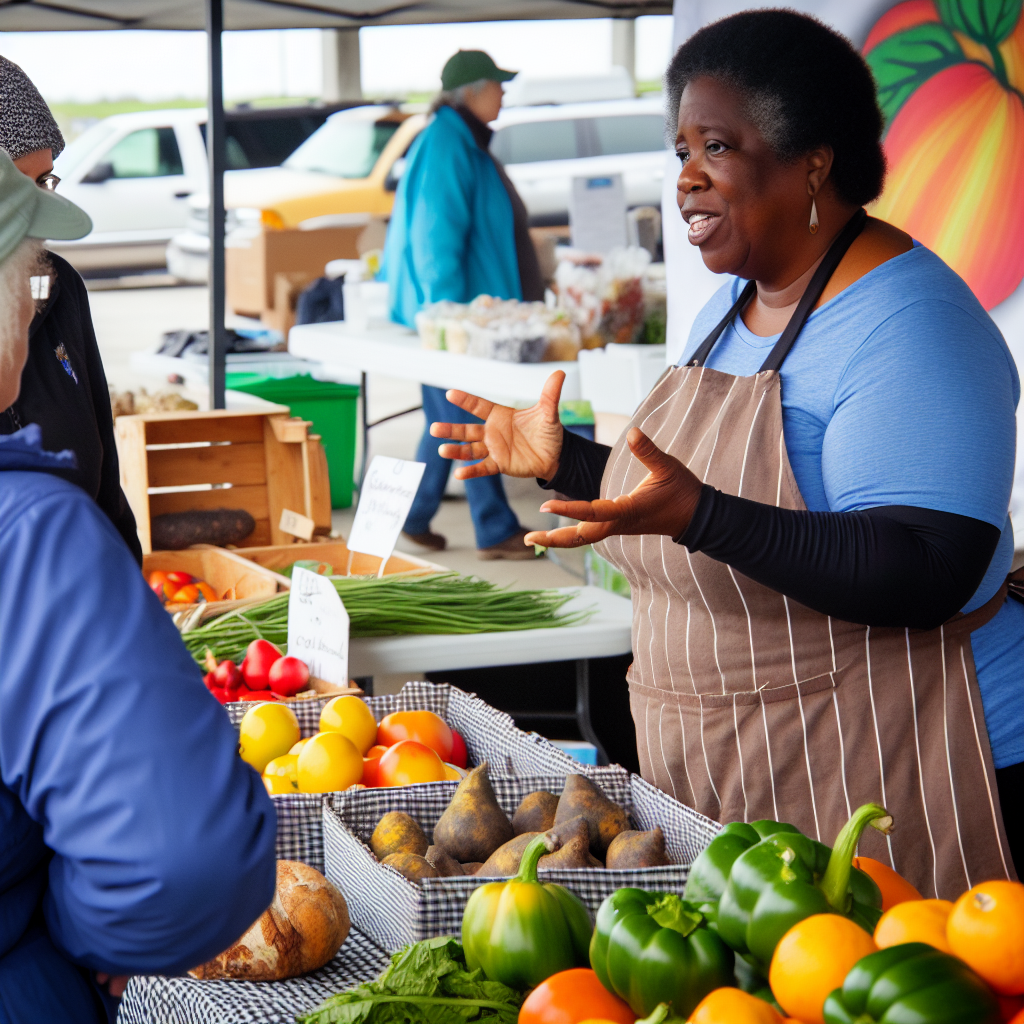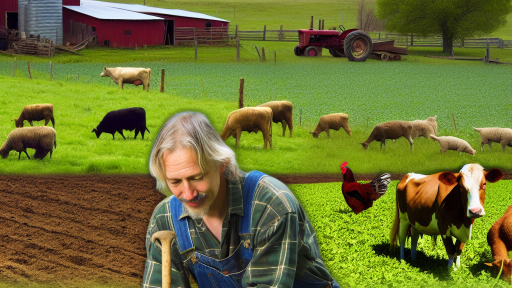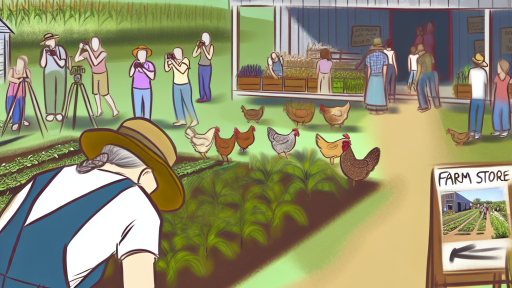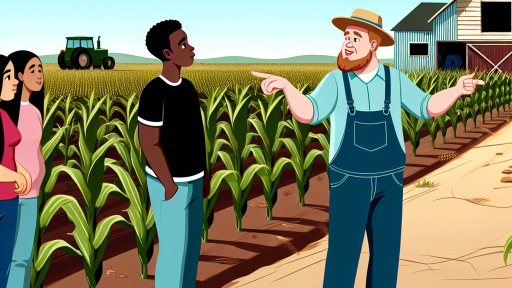Understanding Brand Loyalty
Definition of Brand Loyalty
Brand loyalty refers to consumers’ commitment to repurchase or continue using a brand.
This commitment often results in repeat purchases and consistent preference.
It reflects consumers’ positive experiences with a brand’s products or services.
Importantly, brand loyalty leads to an emotional connection with a brand.
Importance of Brand Loyalty in Direct Farm Sales
Brand loyalty is crucial for farmers engaged in direct sales.
It enhances customer retention, which is vital for sustainable revenue.
Moreover, loyal customers often become brand ambassadors.
They share positive experiences with friends and family.
This word-of-mouth marketing benefits farmers without additional costs.
Factors Influencing Brand Loyalty
Several factors contribute to building brand loyalty in direct farm sales.
- Quality of products plays a significant role.
- Customer service impacts the overall experience.
- Transparency in farming practices fosters trust.
- Engagement through community events strengthens relationships.
Strategies to Build Brand Loyalty
Farmers can adopt various strategies to cultivate brand loyalty.
- Offering loyalty programs rewards regular customers.
- Providing exceptional customer experiences encourages repeat visits.
- Regularly communicating with customers keeps them engaged.
- Sharing the story of the farm enhances emotional connection.
Identifying Target Audience
Understanding the Importance of Customer Personas
Customer personas help define your target market effectively.
They provide insights into customer behaviors, preferences, and needs.
Additionally, these personas guide your marketing strategies.
Creating Effective Customer Personas
Start by gathering demographic data about your customers.
Transform Your Agribusiness
Unlock your farm's potential with expert advice tailored to your needs. Get actionable steps that drive real results.
Get StartedConsider age, gender, income level, and education background.
This information forms the foundation of your personas.
Conducting Market Research
Engage with your current customers to gain insights.
Surveys can reveal what drives customer loyalty.
Focus groups offer detailed feedback on product offerings.
Defining Customer Needs and Pain Points
Identify the primary needs of your target audience.
Understand the challenges they face with farm products.
By addressing these pain points, you can build loyalty.
Segmentation of Customer Personas
Group your target audience based on shared characteristics.
Segmentation allows for tailored marketing strategies.
For instance, health-conscious consumers may prefer organic options.
Utilizing Customer Personas in Marketing
Incorporate personas into your messaging and branding.
This ensures relevance and connection with your audience.
Additionally, use personas to create targeted promotions.
Monitoring and Refining Personas
Regularly update your customer personas based on new data.
Market trends and customer behavior can change over time.
Staying adaptable will enhance your marketing effectiveness.
Quality Products
Importance of Consistent Quality
Delivering high-quality products builds customer trust.
Trust is essential for developing brand loyalty.
When customers know they can count on quality, they return.
Consistency eliminates uncertainty and builds confidence.
Therefore, prioritize quality in every aspect of production.
Implementing Quality Control Measures
Effective quality control starts with understanding standards.
Establish clear quality benchmarks for all products.
Showcase Your Farming Business
Publish your professional farming services profile on our blog for a one-time fee of $200 and reach a dedicated audience of farmers and agribusiness owners.
Publish Your ProfileTraining staff members on these standards is crucial.
Regular inspections and evaluations ensure compliance.
Utilize customer feedback to identify potential issues.
Showcasing Quality in Marketing
Marketing should highlight the quality of your products.
Use testimonials from satisfied customers in promotions.
Visual imagery can effectively showcase product excellence.
Engage customers through stories about your farming practices.
Transparency in sourcing and production builds credibility.
Building Relationships with Customers
Interaction creates a strong community around your brand.
Regular updates and communications keep customers engaged.
Encourage feedback and respond promptly to inquiries.
Host events to connect with customers on a personal level.
Develop loyalty programs that reward repeat customers.
Explore Further: Farm-to-School Success Stories for Farmers
Building Relationships: Strategies for Engaging and Retaining Customers
Connecting with Your Community
Building relationships starts with connecting to your community.
Attend local events to meet potential customers face-to-face.
Additionally, support local charities and organizations for greater visibility.
Social media is another useful tool for community engagement.
Share content that showcases your farm and its values.
Engage with customers by responding promptly to their inquiries.
Creating a Memorable Customer Experience
Your customer experience can set you apart from competitors.
Greet every customer with warmth and enthusiasm.
Offer farm tours to showcase your production process.
Additionally, provide samples of your products to entice new customers.
Personalize your service by remembering repeat customers’ names and preferences.
Implementing Loyalty Programs
Loyalty programs can incentivize repeat business.
Offer points for every purchase that customers can redeem later.
Consider exclusive discounts for loyal customers to express appreciation.
Moreover, host special events for members of your loyalty program.
This approach fosters a more personal connection with your brand.
Gathering and Utilizing Customer Feedback
Feedback can provide valuable insights into customer preferences.
Regularly ask for opinions through surveys or comment cards.
Act on the feedback by implementing suggested changes.
Transparency in this process builds trust and loyalty.
Additionally, thank customers for their contributions to show appreciation.
Building an Online Presence
An active online presence strengthens your brand.
Update your website regularly with fresh content and product updates.
Share customer testimonials and success stories to build credibility.
Engage followers by posting regularly on social media platforms.
Consider a blog that shares tips and insights related to your farm products.
Showcase Your Farming Business
Publish your professional farming services profile on our blog for a one-time fee of $200 and reach a dedicated audience of farmers and agribusiness owners.
Publish Your ProfileThis content not only informs but also builds a loyal customer base.
See Related Content: Promoting Your Farm with Local Food Sourcing
Personal Branding: How Farmers Can Create a Unique Identity
Understanding Personal Branding
Personal branding allows farmers to showcase their unique qualities.
It establishes a connection between the farmer and the consumer.
This connection fosters trust and loyalty over time.
Moreover, a strong brand differentiates farmers in a competitive market.
Defining Your Unique Story
Every farmer has a unique story worth telling.
Your story may include family history or farming practices.
For instance, Emily at Green Hill Farms shares her organic journey.
This narrative resonates with health-conscious consumers.
In addition, personal anecdotes make your brand relatable.
Consistency Across Platforms
Consistency is key to personal branding success.
Your message should align across all marketing channels.
For example, social media profiles should reflect your farm’s values.
Moreover, use similar visuals to create a unified brand image.
This helps consumers easily recognize and remember your brand.
Engaging with Your Audience
Engagement strengthens brand loyalty among customers.
Consider hosting farm tours to connect with your community.
Additionally, share behind-the-scenes content on social media.
This transparency builds authenticity and trust with your audience.
Furthermore, encourage feedback to show you value their opinions.
Building an Online Presence
An online presence is crucial in today’s market.
Create a website to showcase your farm and products.
This site should reflect your brand’s personality and story.
Moreover, utilize social media to reach a wider audience.
Regular updates keep your followers engaged and informed.
Leveraging Partnerships and Collaborations
Partnerships can enhance your brand visibility.
Collaborate with local businesses or farmers’ markets.
This mutual support can broaden your customer base.
For instance, teaming up with a local bakery can feature your produce.
Such collaborations amplify brand recognition in the community.
Uncover the Details: Building Trust With Ethical Farming
Leveraging Social Media
Understanding the Importance of Social Media
Social media is a powerful tool for direct farm sales.
It connects farmers directly with their customers.
This connection builds trust and loyalty over time.
Selecting the Right Platforms
Choosing the right social media platforms is essential.
Each platform attracts a different audience.
For example, Instagram is great for visual storytelling.
Facebook creates communities and engages with customers.
Twitter facilitates quick updates and customer interactions.
Showcase Your Farming Business
Publish your professional farming services profile on our blog for a one-time fee of $200 and reach a dedicated audience of farmers and agribusiness owners.
Publish Your ProfileCreating Engaging Content
Engaging content keeps your audience interested.
Share behind-the-scenes glimpses of farm life.
Highlight seasonal produce and farming techniques.
Use videos and photos to showcase your products.
Encouraging User Interaction
Encourage your customers to share their experiences.
Invite them to post photos of your products.
Run contests or giveaways to boost engagement.
Respond promptly to comments and messages.
Building a Community
Social media helps foster a sense of community.
Engage with local customers and fellow farmers.
Share news and updates relevant to your audience.
Encourage discussions around sustainable practices.
Utilizing Advertising Tools
Consider using social media ads to reach a wider audience.
Target specific demographics relevant to your farm.
Monitor ad performance and adjust strategies accordingly.
Measuring Success
Track engagement metrics to gauge success.
Analyze what types of content your audience prefers.
Adjust your strategy based on performance data.
Continuous improvement leads to better customer connections.
Delve into the Subject: Building Strong Farm and School Partnerships

Customer Feedback
Importance of Customer Insights
Gathering customer feedback is essential for any business.
It helps you understand your customers’ needs and preferences.
Moreover, insights from customers drive product improvement.
Ultimately, this leads to increased customer loyalty.
Implementing Feedback Systems
Establish systems to collect feedback effectively.
You can use surveys, feedback forms, or social media channels.
These tools provide valuable insights from your customers.
Additionally, encourage customers to leave reviews online.
This creates a sense of community and engagement.
Responding to Feedback
Actively respond to the feedback you receive.
This shows customers that you value their opinions.
When customers see changes based on their feedback, they feel appreciated.
Moreover, address any negative feedback promptly and professionally.
Resolve issues quickly to retain customer trust.
Using Feedback for Continuous Improvement
Analyze feedback regularly to identify trends and areas for growth.
This ongoing evaluation helps refine your offerings.
Incorporate customer suggestions into your product development process.
Ultimately, this fosters a responsive and customer-centric brand.
By focusing on customer feedback, you build lasting loyalty.
Loyalty Programs: Designing Effective Incentives to Reward Repeat Customers
Understanding Customer Loyalty
Customer loyalty drives repeat purchases and long-term success.
Showcase Your Farming Business
Publish your professional farming services profile on our blog for a one-time fee of $200 and reach a dedicated audience of farmers and agribusiness owners.
Publish Your ProfileLoyalty programs are essential tools for cultivating this behavior.
By rewarding loyal customers, businesses can enhance brand affinity.
Key Elements of a Successful Loyalty Program
First, establish clear incentives that motivate customers to engage.
Offers should be relevant and appealing to your target audience.
Consider providing discounts on future purchases or exclusive products.
It’s crucial to communicate these benefits effectively.
Next, simplicity in the enrollment process enhances participation.
Make sign-ups easy and user-friendly through online platforms.
Transparency in how the program works builds trust and understanding.
Types of Loyalty Programs
Point-based systems reward customers based on their spending.
For instance, give points for every dollar spent, redeemable for rewards.
Tiered loyalty programs encourage higher spending for greater perks.
Customers progress through levels, unlocking more exclusive offers.
Subscription-based models can provide guaranteed revenue and retention.
In this case, customers pay a recurring fee for consistent benefits.
Measuring Program Success
Establish clear metrics to assess the program’s effectiveness.
Track customer retention rates and average order values regularly.
Gather feedback to enhance and adjust the program as needed.
Evaluate both quantitative and qualitative data for a comprehensive view.
Promoting Your Loyalty Program
Utilize various channels to promote your program actively.
Social media campaigns can create buzz and attract new members.
Consider email marketing to inform existing customers about new offers.
In-store signage and promotions encourage participation among walk-in customers.
Continuously Evolving Your Approach
Stay informed about industry trends to keep your program relevant.
Regularly evolve your offerings to meet changing customer preferences.
Adapting to feedback ensures sustained engagement and interest.
Ultimately, a dynamic loyalty program creates lasting customer relationships.
Storytelling: Sharing Your Farm’s Journey to Create Emotional Connections
The Power of Personal Narratives
Your farm’s story is a unique and powerful asset.
People connect with stories rather than statistics.
Personal narratives evoke emotions and foster relationships.
When customers hear your journey, they feel invested.
Highlighting Your Challenges
Every farm faces challenges on the path to success.
Sharing these struggles makes you relatable and authentic.
Discussing hardships builds trust and loyalty.
Moreover, overcoming obstacles shows resilience and dedication.
Showcasing Your Achievements
Celebrate your successes as you share your journey.
Customers enjoy hearing about farm milestones.
Highlighting achievements can inspire customers to align with your brand.
It’s essential to convey your growth over time.
Engaging Through Visuals
Use photographs and videos to enhance storytelling.
Showcase Your Farming Business
Publish your professional farming services profile on our blog for a one-time fee of $200 and reach a dedicated audience of farmers and agribusiness owners.
Publish Your ProfileVisual content captures attention and creates lasting memories.
Showcase your farm, team, and the products you offer.
This approach fosters a deeper connection with your audience.
Incorporating Customer Stories
Share testimonials and stories from satisfied customers.
These narratives demonstrate your impact on their lives.
Additionally, they encourage community engagement and loyalty.
People appreciate seeing themselves in your brand’s journey.
Consistency is Key
Regularly share updates about your farm’s story.
Consistency keeps your audience connected and engaged.
Use social media, newsletters, and blog posts to share updates.
This interaction reinforces customer loyalty and trust.
Additional Resources
Direct Marketing – ATTRA – Sustainable Agriculture
Review Local food systems: Reviewing two decades of research




